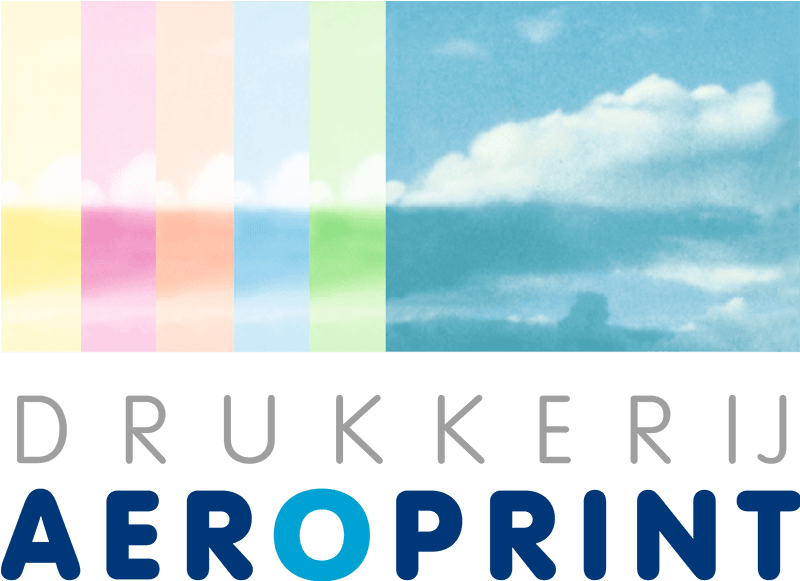
YOUR DOCUMENT
How do you deliver a digital document to Aeroprint? What's the proper file format? Which settings do I keep in mind? Where can I send the files? On this page you will find useful information that will help you deliver your files.
Fileformat
In order for us to process your files properly, here's a summary of supported file formats…
The most common file format to deliver your files is probably PDF. Most software will be able to export a PDF file in some form or way. The more professional the software is, the more options you have to influence the quality of the PDF. Depending on what software you use, it's important to stick to the following guidelines:
Basics
Always try to export your PDF in the highest possible quality that you have available. Look for settings like "Press Quality" or "Optimized for print".
Advanced
Professional software (like for instance Adobe Indesign) provide a wide selection of options for exporting your PDF. Apart from the default settings, you can often create and import settings for specific purposes. For the best result we advise you to use our custom PDF export settings which you can download here.
Other file formats
Of course our studio has all the means to process most common file formats:
Microsoft Office
Although it's not considered professional graphics software, Microsoft Office offers more than enough tools to create a sightly document. Here at Aeroprint we have the tools to process, edit and personalize your Office documents. Please be advised that, in contrast to PDF, Microsoft Office documents do have a tendency to mess up your layout depending on how and where you open your document.
Adobe Indesign (.indd)
Indesign is currently the industry standard layout software. We can process these files effortlessly. Do make sure that all the links (photos, illustrations, spreadsheets, etc.) are included or embedded. Also, don't forget to inlude the correct fonts. It's considered best practice to export a package from Indesign. You can find a short tutorial on how this works on our Tips & Tricks page.
Adobe Illustrator (.ai, .eps)
Just like with Indesign, we are perfectly equipped to process your Adobe Illustrator files. Again, make sure to include or embed all the linked files and fonts. Text may be converted to outlines for your and our convenience. This preempts the need to include your fonts. For more information on outlining your text, please check out Tips & Tricks.
Adobe Photoshop (.psd, .tiff, etc.)
Want to deliver separate images? No problem. We can pretty much process all common image formats. Always do keep an eye on the correct size and resolution of your files. A resolution of 300 dpi is still rule of thumb. Please note that in some cases a resolution of 150 dpi will suffice, whereas in other cases a higher resolution is required. Consult our page on Resolution for more detailed information. It's also important to realize that both text and vectors will most likely be converted to pixels in most image formats. If you value sharp and crisp lines or text, please notify us on forehand.
Document settings
Besides the file format there are several other points to consider:
Size
At Aeroprint we produce printed matter in every thinkable size and form. From closing stickers and miniature books to posters and roll-up banners. It's important to deliver your files in the proper size AND proportion. If for instance you want to produce an A4 flyer, the proper dimensions of the document are 210 × 297 mm. It's not necessary to manually add cropmarks to your design. Either let the software take care of the cropmarks or omit them all together.
Bleed
After printing your design will be trimmed to the right size in most cases. No matter how precise we can trim, there's always a small error margin. For that reason you should always try to add a bleed of at least 2,5 mm around your document. This means that all objects that touch the edge of your design should be extended at least 2,5 mm beyond the trim size. Also avoid placing important information like text too close to the edge.
Setting up your document
Before setting up your document, it's important to think about the execution of your product. Is it a one or two sided design? Is it sewn, saddlestitched or perfect bound? How many pages? These are all things to consider. Indesign offers the option to create facing pages. This is ideal for books and brochures, but not for flyers or posters. Please review all the different options on the bottom of the page.
Color settings
Colormanagement can be very complicated and daunting. And yet it determines the quality of the final product. Make sure your software is properly configured and that your document has the proper colorsettings. On the page Color you will find all the necessary tools and information for a predictable endresult.
Where to send your files?
You can send your files using a file delivery service like WeTransfer. If your files exceed the (free) limit of 2 GB, please contact us.
